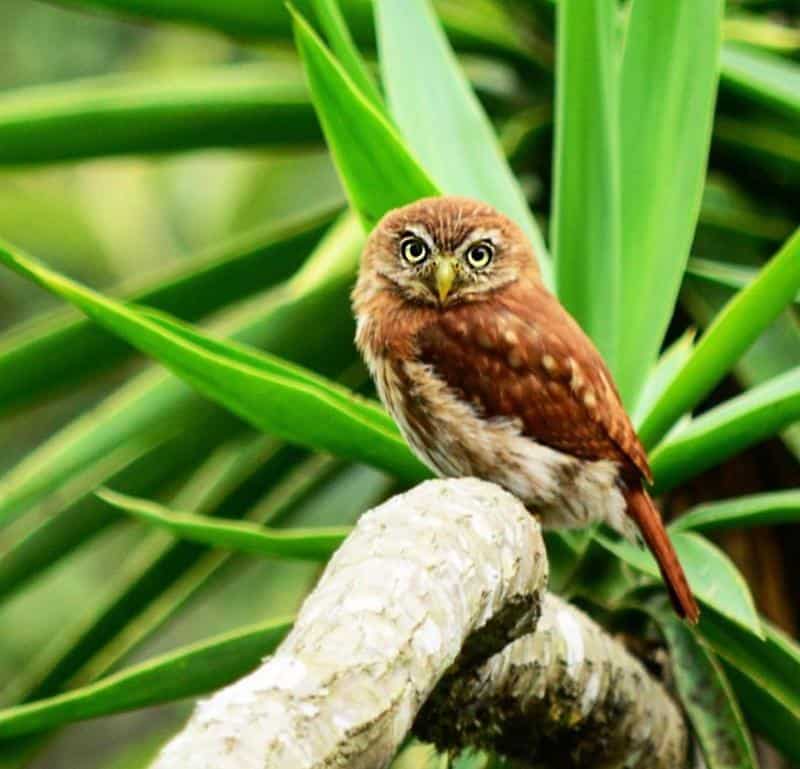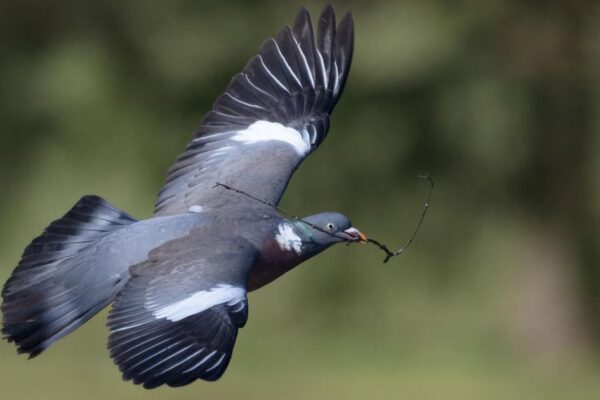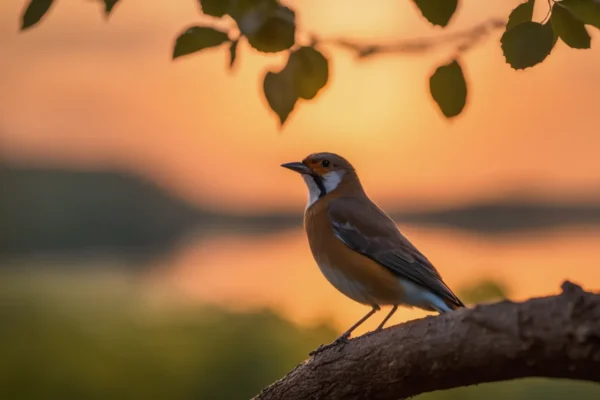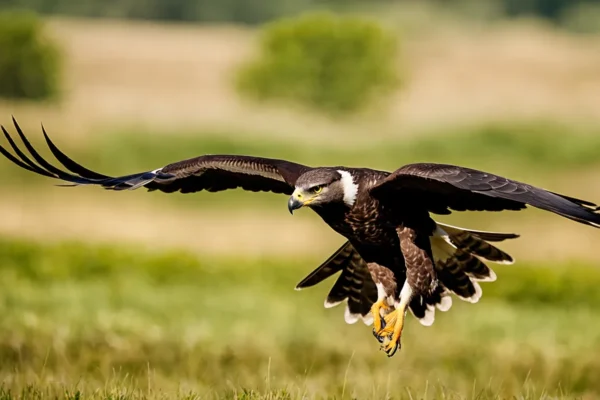The majority of us believe that owls are only nocturnal birds, which means that they hunt, hoot, and are active at night.
You can thus appreciate the surprise that some people feel when they hear hooting during the day. Most of us assume that the bird may be a diurnal bird imitating the owl’s hooting.
That may be true in certain situations (we shall discuss birds that mimic the hoot later), but in reality, owls do hoot throughout the day.
There are two types of owls that hoot during the day: first, there are species of owls that are diurnal, and second, night owls have their own motives for hooting during the day.
An owl’s eye color might reveal what time of day it hunts: nocturnal owls have black or dark brown eyes, whereas diurnal owls have brilliant yellow irises. Crepuscular owls have orange irises.
I welcome you to read this post to learn about five different species of owls that hoot throughout the day and the reasons behind them.
Reasons for Owls’ Daytime Hoots
One kind of communication used by owls is hooting. They also use different notes to convey different messages and demands.
For instance, an owl male’s hooting is shorter and more subdued during mating, but considerably louder and longer while the bird is trying to entice a mate.
An owl’s gender can usually be determined by the distinct hoots that males and females make, although some sing in duets, which are rapid, brief, and loud calls made simultaneously by both partners.
Owls exchange short tones to indicate to the “host” that their “guest” has arrived. This is how they “greet” each other when they encounter.
When two owls cross paths, they will begin by hooting loudly and fiercely until they get to know one another. (an owl can recognize another owl by hooting noises).
Territorial claim
Similar to how wolves mark their territories with howling, owls use hooting to proclaim the area they have just taken over for hunting.
Territorial claim is accompanied by loud, prolonged, and hostile hooting. The Owl’s warning to other Owls not to intrude on their area is conveyed by its deep hooting.
While some owls are only territorial during the nesting and breeding season, they hoot to keep predators and other animals away from their region in addition to protecting their eggs and younglings.
While hooting helps resolve disputes without physical contact, owls may become aggressive and even brazen while protecting their nest. Even reports of inquisitive people being attacked when they strayed too near exist.
Songs for Mating
Owls begin to procreate in late winter or early spring, when males of distinct species will hoot at different times of the day.
Male owls may have trouble producing a good mating hoot during the beginning of the breeding season, leading them to make strange sounds instead.
The purpose of the hooting is to approach a possible female. The female will hoot back in response if she feels attracted (but only to males of the same species).
The male will provide the female a delicious supper, a ground dance with hooting and spiral movements, and a soaring flight once he hears the “I-said-yes” hoot.
The whole show goes on until it becomes too dark or the female begins to hoot with the male, signifying that the two Owls have been paired (usually for life).
Additionally, the paired Owls set a good example by hooting together to declare their commitment and promote intimacy.
Needs for Hunger
The reason nocturnal owls are active and noisy during the day may be because they are having difficulties in their typical range when it comes to hunting or getting food.
In some other situations, an expanding family also needs more midday feeding expeditions.
When the female owl is watching over the nest and the male is off hunting, diurnal owls will hoot during feeding time.
Often, the male hoops to communicate with the female. The female hoots back quickly if everything is well, or she lets out a lengthy shriek if things is not right.
Since we are discussing larger families, it is also important to note that owlings in the nest may have quite aggressive and vicious lives. They will often fight and screech for food, attention from their mothers, and even survival.
Thus, the fact that the “kids” are hungry or refuse to go to sleep is another explanation for the owls’ daytime hooting (we feel you, dear Owls).
Fear or Danger
Although it is difficult to think that these fierce predators would fear anything, foxes and crows, for example, may pose a threat to a young owl or an elderly or wounded owl. Owls are predatory birds.
When an owl hoops during the day, it might mean that it has seen a predator approaching either its nest or itself.
Owls screech at other owls and dangerous creatures they come across. It’s unclear whether they are a reaction to the intruder alarming them, warning the other owls about the danger, or both.
Most owls will depart the area after hooting at a predator, but others may just pursue the outsider who has entered their domain.[3]
Hooting owls throughout the day
Although the majority of owls are nocturnal or crepuscular, two officially recognized species of owls are diurnal:
Pacific Pygmy-Owl

One is the diurnal, tiny, yellow-eyed Pacific Pygmy-Owl (Glaucidium peruanum), also called the Peruvian Pygmy-Owl and found in Ecuador and Peru.
The Northern Pygmy-Owl hoots in a variety of ways, from a sharp, short chirp to a series of high-pitched notes that are released at intervals of 1-2 seconds and are often sung by couples simultaneously.
The Pacific Pygmy-Owl’s beak snaps when it comes into contact with predators, and its eager hoot might conclude with a sound like a warbler’s vocalization.
Northern Hawk Owl

The Northern Hawk Owl (Surnia ulula), a medium-sized bird with yellow eyes that may be found all throughout the Northern Hemisphere, is the other owl that is officially acknowledged as a diurnal one.
The cry of the Northern Hawk Owl is a brief, purring melody with 154–210 notes; it has a thrilling crescendo that may persist for up to 14 seconds before abruptly ending.
The male and female hoots in response, but the female’s is louder and has a higher tone.
When both mates are enthusiastic, their hooting mimics a kestrel’s chirping, and the couples greet one another by making brief, gentle noises that sound like sighs.
Barred Owl

The medium-sized Barred Owl (Strix varia), sometimes called the Striped Owl or the Hoot Owl, is a nocturnal bird of prey native to North America. Its eyes are a shade of brown.
But if nighttime hunting isn’t going well, the Barred Owl may still be seen during the day stalking and hooting, particularly in overcast conditions.
Furthermore, the Barred Owl gets active during the daylight if it hears other owls hooting. This might be the sound of a human whistle imitating the owls’ hooting, another raptor owl, or a predator hiding nearby.
Regardless, the Barred Owl is one of the most active owls during the day, ranking sixth among the nineteen common species of North American owls in terms of diurnal activity, despite being a nocturnal bird in theory.
The Barred Owl is a highly noisy bird that hoots eight times in a row during the day and then pauses (perhaps anticipating a subsequent hoot in response).
When Barred Owls mate, the males’ calls are lower and softer than those of the couples; at times, the males’ calls might sound like monkey noises.
The Barred Owl’s hoot may sometimes sound like a brief scream or yelp.
Burrowing Owl

Originating from North and South America, the Burrowing Owl (Athene cunicularia) is a tiny, crepuscular owl with long legs and brilliant yellow-greenish eyes.
The bird’s eating and hunting schedule makes it a crepuscular species. The Burrowing Owl, on the other hand, is active throughout the day and also hoots; it only avoids the blazing noon sun when it feels like taking a nap.
The Burrowing Owl, like other owls, is a highly noisy bird that uses a range of hoots to convey various signals. Additionally, the note pitches it produces vary according on how excited the bird is.
The tone of the female Burrowing Owl’s hoot is somewhat higher than that of the male.
Both males and females can replicate the rattlesnake’s sound, with their hoots sounding like an escalating, rattley shriek when they sense danger.
The Short-Eared Owl

The Short-Eared Owl (Asio flammeus), a medium-sized bird, is a crepuscular-diurnal owl based on its orange-yellow eyes.
All around the globe (except from Antarctica and Australia), the Short-Eared Owl is a hooting, active bird of prey that hunts in wide fields.
The Short-Eared Owl mostly hunts at night, however it will also hunt in the early morning and late afternoon when the chance presents itself.
The familiar “boo-hoo-hoo” is the hoot used by males to mark their territory. The female responds with a brief shriek that sounds like a puppy’s bark.
When both mates are afraid, they simultaneously bark at the same time, raising the volume and becoming more raspy.
Snowy Owl

The Snowy Owl (Bubo scandiacus), often called the White Owl, the Arctic Owl, the Polar Owl, or the Arctic Owl, is a large, diurnal owl native to the Arctic (Palearctic and North American regions), with yellow eyes.
Mostly during the mating season, the Snowy Owl is a vigorous daytime hunter and hooter.
Apart from this, the Snowy Owl is rather quiet due of its open environment and nocturnal habits, which put it in greater risk.
During the breeding season, the male’s call changes from a loud, strident, harsh barking to a sonorous hoo-hoo-ing, which may be used as a territorial warning or mating cry.
The females’ warning cry is a throaty vocalization akin to the ring dove’s song, even though they don’t often hoot.
Final Thoughts
The owl uses a variety of tones and noises to communicate with other owls, ward off predators, and locate potential mates. This is known as hooting.
Being diurnal, two species of owls hoot throughout the day when it is their natural time to be active.
The daytime hoots of the crepuscular and nocturnal owl species occur when they are startled, when predators are in the vicinity, or when they hear other owl noises, such as the whistle of a human or other raptor owl.
A crepuscular or nocturnal owl may remain active and vocal throughout the day if it has to hunt more during the day because its family is becoming larger or if it had a bad hunting day.






